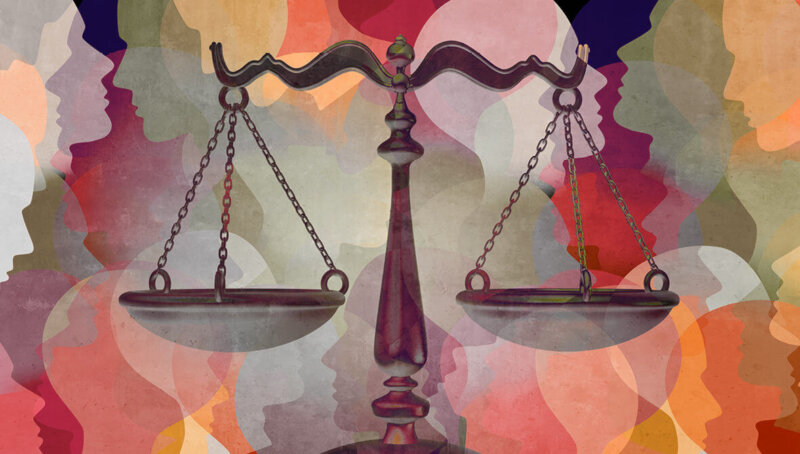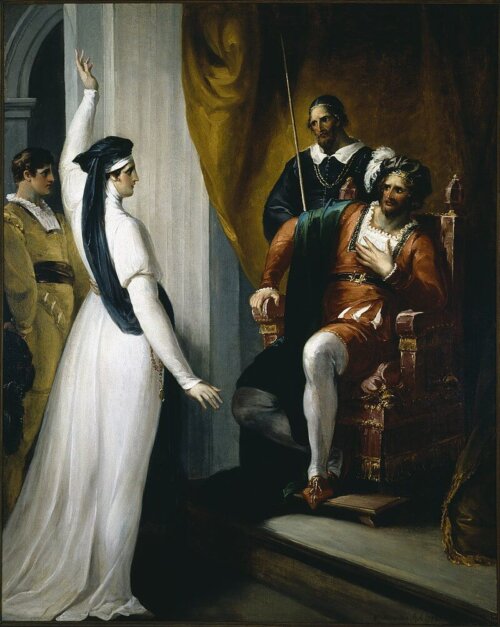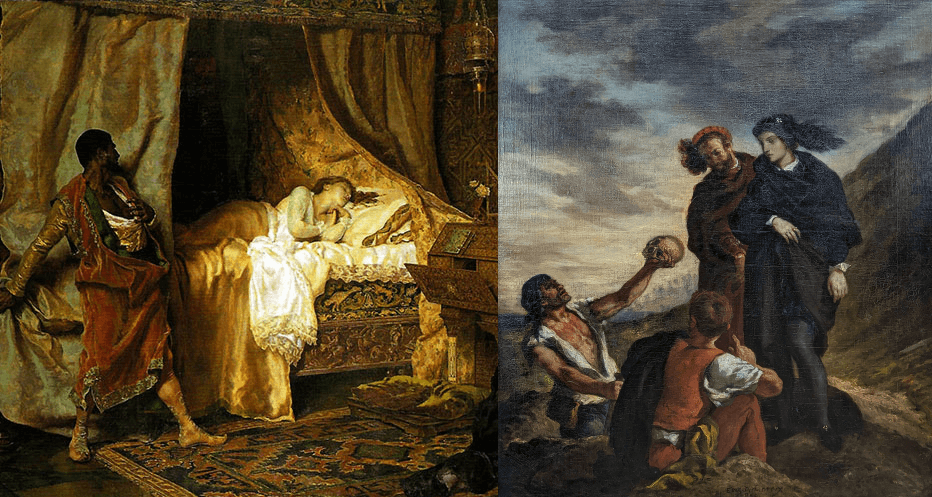How to Differentiate Virtue Signaling from a Genuine Defense of the Scapegoat

Ruth Gilmore Wilson, a prison abolitionist, states: “Instead of asking whether anyone should be locked up or go free, why don’t we think about why we solve problems by repeating the kind of behavior that brought us the problem in the first place?” Wilson suggests that prisons “model” cruelty and vengeance. She admires Spain’s policy of incarcerating even cold-blooded murderers for just seven years. “Which is to say…in Spain people have decided that life has enough value that they are not going to behave in a punitive and violent and life-annihilating way toward people who hurt people. And what this demonstrates is that for people trying to solve their everyday problems, behaving in a violent and life-annihilating way is not a solution.’”[1]
Murderers are locked up in prisons because leaving them free represents an intolerable danger to innocent people. This is not itself “violent.” It is not violent to imprison someone in the interests of public safety. Nor is it “life-annihilating.” It could be considered life-affirming. We care enough about people to try to protect them from those who wish to murder them, rape them, rob them, and assault them. If there is a punitive aspect to their incarceration, then that might be acceptable as a possible deterrent to this kind of behavior. The claim “for people trying to solve their everyday problems, behaving in a violent and life-annihilating way is not a solution” is an odd and misleading one. Imprisoning cold-blooded killers is not what is plausibly meant by the harmless-sounding phrase “people trying to solve everyday problems.” Such a locution suggests activities like locating a plumber to fix a sink, or finding enough time to exercise, not dealing with killers. If it is in fact dealing with killers that is being referred to, then behaving violently in self-defense, for instance, is completely reasonable.
Wilson is not alone in her strange compassion for murderers and rapists and a complete neglect for their victims; a tendency that became widespread in the anti-prison movement which was prominent in the 1960s and 1970s with disastrous results. The murder rate went up 400% in fifteen years, leading to voter initiatives for increased sentences for habitual offenders in the 1980s.[2] Incarcerating violent criminals, it turns out, benefits their prospective victims.
In this way of thinking about things, it is the violent murderers and rapists who are the “victims” of society and circumstance. So, Wilson, in her concern for criminals and her disregard of the murdered, robbed, assaulted, and raped is following this recent trend in thought. It is the destiny of the criminal; his punishment and the supposed vengeance taken against him, that concerns her. The perpetrator of crime is imagined to be the victim of social forces and the actual victim of his actions disappears out of sight. There is no unusual apparent virtue in feeling sorry for real rape, assault, and murder victims.
Part of what is going on is that we moderns are now aware of the phenomenon of scapegoating, also known as bullying. The scapegoat is by definition the most despised person. Violent criminals share a superficial similarity to scapegoats because they are among the most hated people in society because they intentionally harm their neighbors in the most grotesque fashion possible and can ruin the quality of life for the rest of us who thereby live in fear. So, a strange behavior can arise where people think of anyone who is disliked as being the innocent victim of scapegoating. The more contempt we have for some group, the more they must be defended from the mob, it is imagined. In this strange new hierarchy, the most admired and successful are hated, and the most contemptible and horrible are loved. Heterosexual white men, Asians, and Jews, are secretly admired, and thus hated. Violent criminals are the targets of hate and thus form a new protected class. However, this whole enterprise is permeated by bad faith. Defending real scapegoats is extremely dangerous because by defending the victim you are aligning yourself with him and are thus likely to face the same persecution as he is. The prison abolitionist, however, faces no danger at all from her attack on prisons and her defense of prisoners and this proves that prisoners do not fall into the category of scapegoats. In fact, she is trying to show how virtuous she is by demonstrating concern for these hated individuals. But, she has no skin in the game. She faces no chance of persecution for her bleeding heart supposed concern for prisoners. If, however, she tried defending white male heterosexuals, she would be attacked by the mob and hated by her ingroup. In this manner, one can see who the real scapegoats are. They are the ones it is dangerous to defend. If, however, defending a person or a group such as the transgendered is likely to be positively good for your career, then this is virtue signaling. You are using the misery of an outgroup for the purposes of self-promotion within your ingroup. You pay no price for your “compassion.” And, by the way, you do not help the outgroup in any tangible manner.
Ruth Gilmore Wilson is competing with her peer group to be the biggest defender of the scapegoat. This requires searching for new groups of people who can be regarded as “victims.” Prisoners are her chosen group. However, they are not the victims of scapegoating. They might be if vigilantism ruled the day. Scapegoats are innocent, while convicted violent offenders, by definition, have been found guilty of horrible crimes using the most refined and rule-following methods available in the public justice system. They have been presumed innocent until proven guilty, hearsay has been forbidden, they have had a chance to hear the specific charges against them, they have had a defense lawyer, and thus have had the right to reply to the charges, and strict rules of evidence have been applied.
A parallel can be made with the “tolerance” of moral relativism. Where moral relativism is mistakenly regarded as a virtue – the notion that all moral perspectives are equal – then it is seen as a good thing to “tolerate” differences of moral opinion where agreement has been impossible to reach. This can be seen as a simple practical necessity at times – to agree to disagree – which does not require adhering to moral relativism at all. But, this thinking can be extended to “tolerating” the most grotesque immorality such as slavery, torture, kidnapping, and genocide. It is immoral to tolerate evil things. That was never the intention of moral relativism. Gilmore can be compared to the undergraduate who thinks it virtuous to tolerate rape and murder, and in fact, she positively wants to remove punishment for such behaviors. She holds her nose and blesses them, and in the process the perpetrators of violence are transmuted into victims.
Scapegoating happens by chance. Human sacrifice, on the other hand, is organized, ritualized scapegoating. A “pharmakon,” a group of selected individuals, are held ready to be sacrificed. Members of the pharmakon are the most vulnerable people in society; slaves, prisoners of war, foreigners, and the physically and mentally handicapped. In the first three examples, there is no family to defend the future victim and thus a reduced chance of retributive violence spreading after their murder. Modern-day prisoners are not members of the pharmakon. They are the reverse. They are those who victimize and satisfy their bloodlust against the innocent. We dislike prisoners precisely because of their predatory behavior and disregard for the well-being of others.
There is a one-word explanation for the professional activist and prison abolitionist: careerism.
NOTES:
[1] Ruth Gilmore Wilson, “Is Prison Necessary? Ruth Wilson Gilmore Might Change Your Mind.” The New York Times Magazine, 17 April 2022. <https://www.nytimes.com/2019/04/17/magazine/prison-abolition-ruth-wilson-gilmore.html>
[2] Heather MacDonald, The War Against Cops, p. 186.




